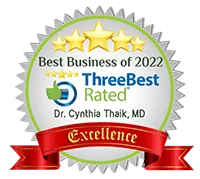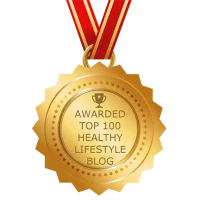High Cholesterol is a common but serious concern for Americans, especially middle-aged and elderly Americans. Over 73 million adult Americans (more than 30 percent of the population) have high cholesterol, and of these, less than one in three has the situation under control. Globally, 2.6 million deaths are attributed to raised cholesterol, as well as a third of ischaemic heart disease. The Holistic Healing Heart Center’s mission is to protect the health, particularly the cardiovascular health, of its patients and the wider community. That is why we seek to educate people about the problems cholesterol can cause and what you, as an individual, can do to prevent or minimize this problem in your own life. The higher fat levels in the blood of someone with high cholesterol provides a more hospitable environment for the coronavirus, leading to higher viral loads that put individuals at greater risk of complications such as organ damage and death.
Cholesterol Patient Education
Cholesterol is a waxy, fat-like substance produced by your liver, as well as being present in animal fats. It is classified as a lipid, and performs several important functions in the human body. That said, practically nobody requires dietary cholesterol: the body is good enough at producing a suitable amount itself. Broadly, cholesterol is divided into two categories, ‘good cholesterol’ and ‘bad cholesterol’.
- Good cholesterol (also known as high-density lipoprotein, or HDL) helps remove bad cholesterol from your body by returning it to the liver. In healthy amounts, good HDL cholesterol can reduce the risk of heart disease or strokes. It can also cut down on the chance of blood clots.
- Bad cholesterol (generally referred to as low-density lipoprotein, or LDL) carries cholesterol through the body so that it can perform its necessary roles. However, in higher concentrations, it can stick to the walls of your arteries, important blood vessels that carry gallons of blood around your body every hour. This cholesterol plaque, as it is called, is one of the risk factors for heart disease, as it limits blood flow. Build-up of bad cholesterol is sometimes called atherosclerosis. If these plaques rupture or tear, they can cause blood clots, either blocking the flow of blood at the site or plugging an artery somewhere further in the bloodstream. Depending on where it occurs, a blockage in blood flow can cause a heart attack or stroke.
High Cholesterol Symptoms and Causes
It’s important to lead a healthy lifestyle in order to limit your exposure to bad cholesterol and to keep levels of both types of cholesterol within healthy bounds. Sadly, there are many factors in the standard American lifestyle which contribute to high cholesterol levels.
- Eating high cholesterol foods, such as red meat, lard, shortening, full and reduced fat dairy, and saturated vegetable oils (e.g. coconut and palm oil). Trans fats (sometimes called ‘partially hydrogenated oils’ on food packaging) can also contribute negatively to cholesterol levels, raising the levels of LDL while lowering the level of HDL. They are often found in commercially-sold baked goods like frozen pizza, cakes, biscuits, cookies, crackers, and especially fried snacks like donuts.
- Inactivity is also a problem that can contribute to higher levels of cholesterol. Physical activity is one of the ways that the body is spurred to create more HDL to manage LDL levels. If you aren’t performing half an hour of exercise at least five times a week, you aren’t giving your body a fighting chance.
- Smoking is, unsurprisingly, another risk factor which compounds the problem of high cholesterol. The chemicals in tobacco smoke, when they enter the bloodstream through the lungs, cause damage to the arteries which make them much more vulnerable to cholesterol plaque. What’s worse, smoking reduces the amount of HDL in the body. It is a multiplier for the risk of heart disease. In fact, for someone with a family history of heart disease and a high cholesterol level, smoking can increase the risk of heart disease by a factor of ten.
- Obesity also has an effect on cholesterol levels. It increases the amount of LDL produced, and impacts your body’s ability to scrub it from the bloodstream. There are 78 million obese American adults. If you are one of them, you may find that standard measures to reduce cholesterol do not work as well on the obese as on less overweight people. This is due to a variety of factors.
- First, obese people’s bodies cannot easily adjust their LDL production based on the fats they consume. In people with lower body fat, the body can regulate this to an extent.
- Frequently, obesity leads to bodily inflammation. Your body’s ability to regulate its response to dietary fat intake is further impeded by inflammation.
- Obesity can also cause insulin resistance. An obese body can have difficulty handling cholesterol normally because the enzymes that typically control it are less responsive.
- Aside from lifestyle, there are other possibilities that put an individual at risk when it comes to cholesterol. Genetic factors, such as the ability to process cholesterol and fat efficiently, can have an impact. Broadly speaking, if both your parents suffered from high levels of LDL cholesterol, you are also likely to develop such a complaint.
- In particular, there is a rare inherited condition known as familial hypercholesterolemia, which causes high levels of total cholesterol and LDL in particular. It generally affects 0.2% of the population. The best way of detecting this condition is through a blood test.
How to Lower Cholesterol with Diet

Diet is one of the major factors contributing to high cholesterol levels for millions of Americans. The truth is, the average American’s diet can put them at risk of a whole host of medical conditions, above and beyond high cholesterol. Adults should have cholesterol levels of between 125 and 200mg/dL. Thanks to concerted efforts to educate American families on healthy practices, the average American’s cholesterol level is trending down. The best ways of reducing cholesterol through diet include:
- Limiting saturated fats and trans fats – These can be found in deep-fried and processed foods, as well as baked goods, chocolate, dairy products, red meat, stick margarine, crackers, and french fries.
- Limit high-cholesterol foods – Typically found in animal products like organ meats, egg yolks, shrimp, whole milk (and dairy products made using whole milk). Eat less than 200mg of cholesterol a day.
- Eat more soluble fiber – This stops your body from absorbing too much cholesterol. It can be found in fruit, whole-grain cereal, and legumes such as kidney beans, lentils, garbanzo beans, and black-eyed peas.
- Eat fruit and vegetables – As well as the high amount of soluble fiber many of these foods possess, a diet high in plant matter can increase the presence of plant stanols and sterols in your body, which function like soluble fiber in preventing uptake of dietary cholesterol.
- Eat oily fish – Tuna, salmon, and mackerel contain omega-3 fatty acids, which increase the levels of good cholesterol in your body.
- Limit salt – You shouldn’t be eating more than a teaspoon of salt a day. Choose low-salt options for ingredients where possible, and resist the temptation to add salt to your food at the table. This is especially important if you’re eating processed food, which likely has already had salt added to improve the taste.
- Limit alcohol – Heavy drinking can cause weight gain, which in turn affects your cholesterol levels.
Statins: Are These Cholesterol-Lowering Drugs Right for You?
A common treatment for high levels of cholesterol is statins. Statins are a class of drugs that block the capability of the liver to produce cholesterol. They work by inhibiting an enzyme called HMG-CoA reductase, which is involved in the production of cholesterol in the liver. By reducing cholesterol production, statins can help lower LDL (“bad”) cholesterol levels and, to a lesser extent, triglyceride levels, while also modestly increasing HDL (“good”) cholesterol levels. Statins are also thought to stabilize cholesterol plaques in arteries, reducing the likelihood of heart attacks. Statins are considered a standard prescription for those suffering from high levels of cholesterol. However, they are not free from side effects. They commonly cause:
- Headaches
- Flushing of the skin
- Drowsiness
- Dizziness
- Difficulty sleeping
- Bloating and/or gas
- Constipation
- Diarrhea
- Rash
- Nausea and/or vomiting
- Abdominal pain and cramping
- Myalgia (muscle pain and tenderness)
More severe side effects include:
- Myositis: muscle aches and injury is more common while on statins and other cholesterol medication. Inflammation of the muscles can easily occur.
- Rhabdomyolysis: this condition of extreme muscle inflammation and damage causes muscles all over the body to become painful and weak, which in turn releases proteins into the blood that gather in the kidneys. This can damage the kidneys, leading to kidney failure and even death. This affects 1 in 10,000 people who use statins, or about 1,700 Americans.
Natural Alternatives to Statins For High Cholesterol
Managing high cholesterol is important for heart health, and while statins are commonly prescribed to lower cholesterol levels, there are some natural alternatives and lifestyle changes that can also help. One example of an alternative to statins is PCSK9 inhibitors. Proprotein convertase subtilisin/kexin type 9 serine protease is a liver enzyme, also known as PCSK9, which reduces the number of LDL (bad cholesterol) receptors available to break down LDL in the bloodstream. Research has shown that people with high levels of PCSK9 tend to experience higher cholesterol levels than people with low levels of PCSK9. PCSK9 inhibitors prevent the enzyme from stopping LDL receptors breaking down cholesterol. In most cases, this means that LDL levels go down. Other alternative treatments for high cholesterol include:
- Red yeast rice is capable of reducing blood cholesterol levels: Red yeast rice is a natural product that is made by fermenting rice with a specific type of yeast called Monascus purpureus. This fermentation process produces a group of compounds known as monacolins, including monacolin K, which is structurally similar to the active ingredient in statin medications.
- Berberine is derived from a number of plants including European barberry, tree turmeric, and phellodendron. It is taken for high cholesterol. In a meta-analysis of six trials, 229 patients with high cholesterol who took between 900-1,500 mg of berberine supplements per day saw improved LDL cholesterol levels with reductions of 20-50 mg/dL (about 25% reduction from baseline).
- Plant sterols (also called phytosterols) are similar in structure to cholesterol and block cholesterol from being absorbed. When your body digests plant sterols instead of cholesterol, it removes some of the cholesterol as waste. This results in lower cholesterol levels and improved health. They are FDA-approved to reduce the risk of heart disease, as part of a low-cholesterol diet.
However, none of these products should be taken unilaterally, and anyone considering them should consult with a functional cardiologist such as Dr. Thaik. Remember that while these natural alternatives can have positive effects on cholesterol levels, they might not be as potent as prescription medications in some cases. If your cholesterol levels are significantly elevated, your healthcare provider might recommend a combination of lifestyle changes and medication for effective management. Always consult your doctor before making any changes to your health regimen. There are issues of safety and efficacy that should be taken into account when contemplating alternatives to statins.
Why See A Cardiologist For High Cholesterol Concerns
When you have too much LDL cholesterol, it builds up in the arteries. The build-up of cholesterol causes lumps of hard fat called plaque to form on the artery walls. These plaque formations can break off and block the artery, a condition known as atherosclerosis. Eventually, an impeded supply of blood and oxygen can lead to problems such as chest pain, and potentially a major cardiovascular event such as a heart attack. The plaque can also burst, triggering a blood clot.
Most patients visit their primary care provider to monitor and manage their cholesterol level. But did you know a cardiologist, and particularly a holistic cardiologist focusing on functional medicine, should be part of your care team if you have high cholesterol? While your primary care provider will address a wide range of health needs, consulting a cardiologist specifically for high cholesterol concerns offers specialized expertise in managing cardiovascular health. When LDL levels become too high, or HDL too low, the imbalance can negatively impact arterial and heart health. Seeing a cardiologist for high cholesterol concerns ensures a focus on your cardiovascular health, tailoring treatment plans, and monitoring your cholesterol levels to effectively manage your heart health.
If you have been diagnosed with high cholesterol, functional cardiologists such as Dr. Cynthia Thaik will work with you to recommend lifestyle changes and manage medication, as well as suggest natural alternatives to statins, where appropriate, to maintain healthy cholesterol levels and heal prevent heart disease. We invite you to schedule a consultation with Dr. Cynthia Thaik to begin your wellness journey.





